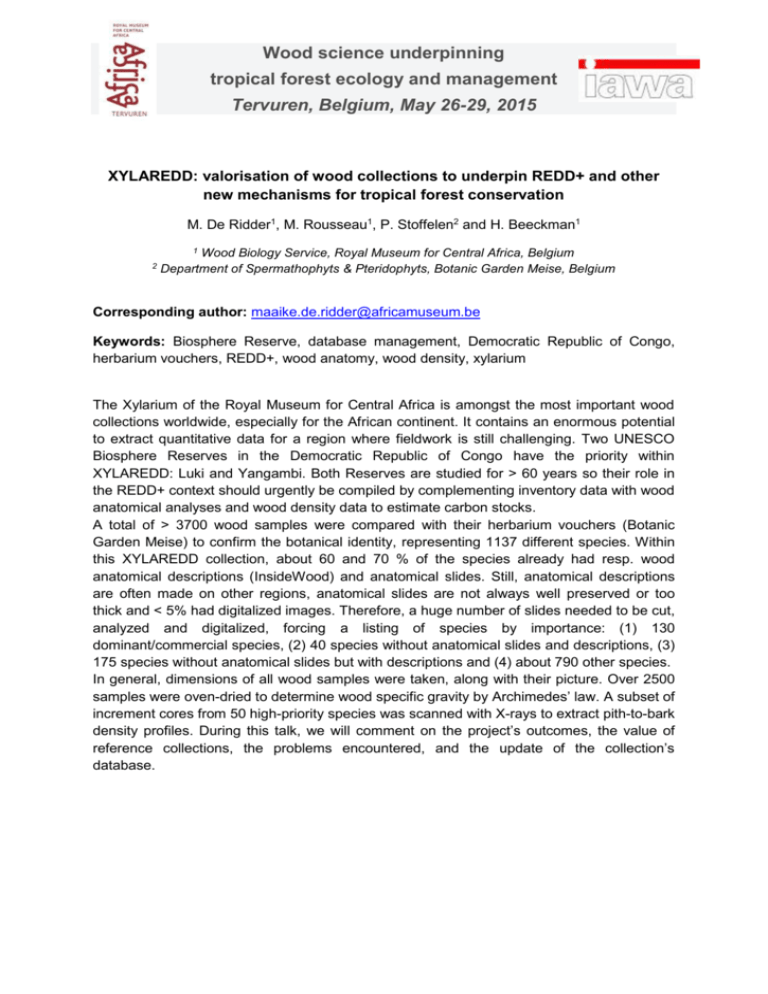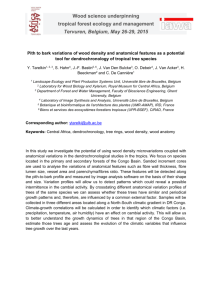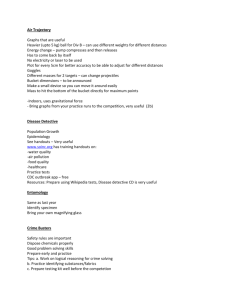DE RIDDER - Royal Museum for Central Africa
advertisement

Wood science underpinning tropical forest ecology and management Tervuren, Belgium, May 26-29, 2015 XYLAREDD: valorisation of wood collections to underpin REDD+ and other new mechanisms for tropical forest conservation M. De Ridder1, M. Rousseau1, P. Stoffelen2 and H. Beeckman1 1 2 Wood Biology Service, Royal Museum for Central Africa, Belgium Department of Spermathophyts & Pteridophyts, Botanic Garden Meise, Belgium Corresponding author: maaike.de.ridder@africamuseum.be Keywords: Biosphere Reserve, database management, Democratic Republic of Congo, herbarium vouchers, REDD+, wood anatomy, wood density, xylarium The Xylarium of the Royal Museum for Central Africa is amongst the most important wood collections worldwide, especially for the African continent. It contains an enormous potential to extract quantitative data for a region where fieldwork is still challenging. Two UNESCO Biosphere Reserves in the Democratic Republic of Congo have the priority within XYLAREDD: Luki and Yangambi. Both Reserves are studied for > 60 years so their role in the REDD+ context should urgently be compiled by complementing inventory data with wood anatomical analyses and wood density data to estimate carbon stocks. A total of > 3700 wood samples were compared with their herbarium vouchers (Botanic Garden Meise) to confirm the botanical identity, representing 1137 different species. Within this XYLAREDD collection, about 60 and 70 % of the species already had resp. wood anatomical descriptions (InsideWood) and anatomical slides. Still, anatomical descriptions are often made on other regions, anatomical slides are not always well preserved or too thick and < 5% had digitalized images. Therefore, a huge number of slides needed to be cut, analyzed and digitalized, forcing a listing of species by importance: (1) 130 dominant/commercial species, (2) 40 species without anatomical slides and descriptions, (3) 175 species without anatomical slides but with descriptions and (4) about 790 other species. In general, dimensions of all wood samples were taken, along with their picture. Over 2500 samples were oven-dried to determine wood specific gravity by Archimedes’ law. A subset of increment cores from 50 high-priority species was scanned with X-rays to extract pith-to-bark density profiles. During this talk, we will comment on the project’s outcomes, the value of reference collections, the problems encountered, and the update of the collection’s database.








